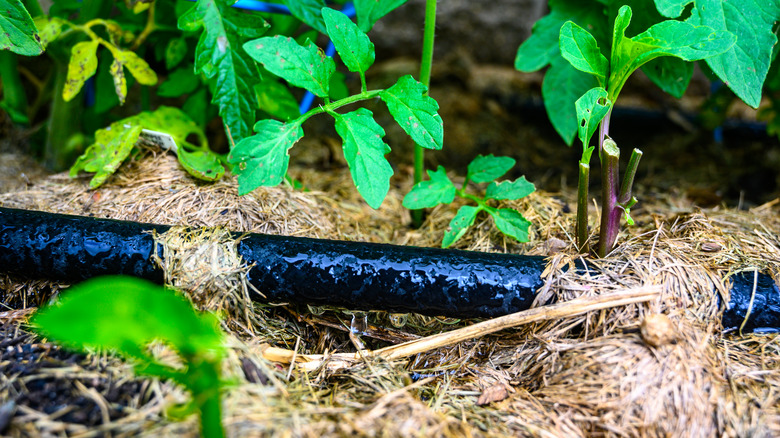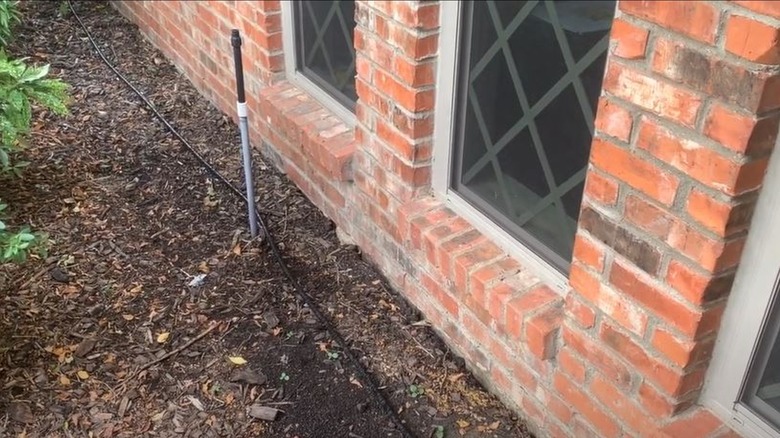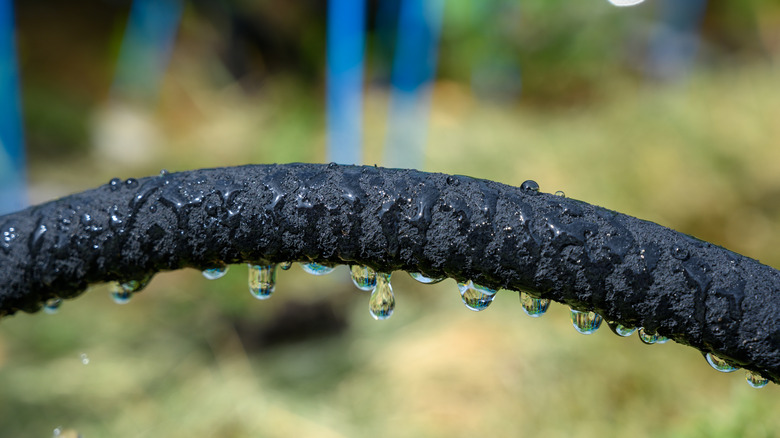How Installing A Soaker Hose Could Save You Thousands When Selling Your Home
If you've ever sold your home before, you know how much goes into the process of ensuring that it's truly "ready to sell." There's decluttering, cleaning, staging, home improvements, and so on. Foundation repair is among the most common improvement expenses. Sometimes it's the most expensive, costing as much as $8,000 or more, but the good news is, foundation repair can be completely avoided in some cases simply by installing soaker hoses.
Different factors can alter a house's concrete foundation, which can eventually lead to interior and exterior structural damage and decrease the value of the home. Extremely dry soil is one of these factors. It's widely known that plants need to be watered regularly, but what's less known is that the soil near a house's foundation needs water, too, even if there are no plants nearby. In some cases, rainfall does the watering for us (thanks, Mother Nature!), but if you live in an area with high heat or drought conditions, you'll need another water source to keep the soil moist.
Sure, you can use a standard garden hose and manually water the soil near the foundation of your home as needed, but not everyone has time for that. Plus, you may end up using more water than you actually need. That's where a soaker hose comes into play. This type of hose allows water to be released on its own, without the need for human hands.
How a soaker hose works, and how to install one
Unlike a standard garden hose, a soaker hose contains thousands of small holes throughout its entire length to allow water to gradually seep out at a low pressure level. This helps the soil (and roots, if you're also using the soaker hose for plants) to receive water evenly while managing ground contraction under your home; keeping the ground moist as needed throughout the year can ultimately help prevent foundation shifting and costly repairs later.
Before installing your soaker hose, measure the area around your entire house about a foot away from the exterior walls. This will help determine what length hose to buy. You can find them as short as 25 feet or as long as 150 feet, and most soaker hoses cost under $70. Connect the end of the hose to your house water spigot, leaving the restrictor plate in place, and lay it on the ground around the house about 12-24 inches from the foundation. If you have more than one spigot, you can use more than one hose. You can use landscape stakes to keep the hose in place and anchored to the ground.
When using the hose for the first time, start with a small amount of water/pressure by twisting the faucet to the left a few inches. Wait a couple of minutes and check the entire hose to ensure that water is seeping out at every section. Adjust the water pressure as needed.
How and when to use a soaker hose for your foundation
In the hottest weeks of the year, run your soaker hose for roughly 45 minutes a day, a few days a week, if there hasn't been sufficient rainfall. It's best to run it in the morning or early evening to prevent evaporation during the hot summer months. You may want to run it for longer and more often if your city is experiencing a drought. One of the telltale signs of a drought is brown, crispy grass that typically relies exclusively on rain for watering.
Unsure if your foundation is receiving enough water? Keep in mind that the ultimate goal is to keep the soil moist to prevent gaps between the soil and foundation. So if you see that the dirt and grass appears to be separating from the house, it means the soil is too dry and needs water. How long and how often you use your soaker hose ultimately depends on the climate and overall moisture level of your soil. You may only need it to use it for a few weeks in the summer or in every season.
Keep in mind that a hose faucet timer is always an option, but make sure to provide some type of shade over it, since direct sunlight can shorten the battery life. You can also consult a foundation professional for more information about how to properly use your soaker hose.


